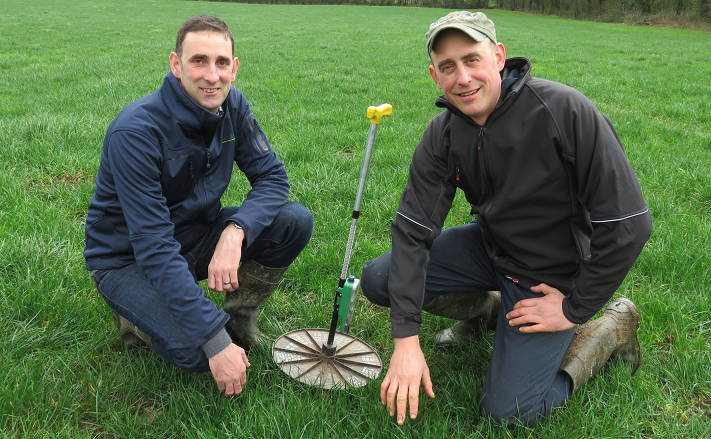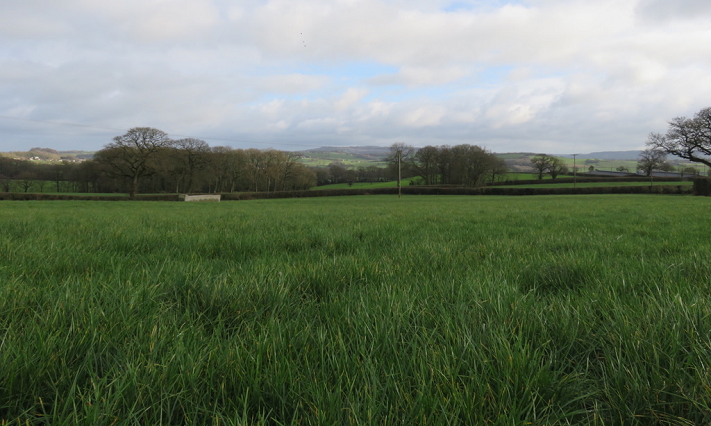Forage rape makes break before reseeding with Fortress
Emerald forage rape cheapens cow ration and cleans up weedy field
Tiverton dairy farmer Andy Broomfield and his wife farm 55ha of rolling Devon grassland with his parents. The herd of 100 cows yields 8,500 litres of high solids milk, which is sold to Dairy Crest for cheese.
Six years ago, Andy started to make changes to the system – producing a smaller, autumn block-calved cow. He wanted to become better at growing and utilising grass and to make the farm more sustainable and profitable.
“I have been inspired by many grassland experts over the years and have been working closely with John Harris from Oliver Seeds for the past three years,” says Andy.
On John’s advice, Andy soil tested the whole farm and found that some fields had very low pH of 4.9. These were limed at 5.5t/ha to correct this.

The worst performing fields were lying wet and had rushes, docks and couch in them. Digging holes revealed compaction at 10cm depth. The decision was made in 2017 to burn the sward off with glyphosate and make a clean entry for the next grass crop using forage rape.
The field was ploughed to help alleviate the compaction and then rolled with heavy rollers to produce a seedbed. Emerald forage rape was broadcast with nitrogen and sulphur fertiliser. The phosphate and potash indices were acceptable. The growing crop was sprayed for flea beetle.
“We had never grown anything like this before and it was a bit of a leap of faith,” comments Andy. “We started strip grazing it in the second week of July, allowing the cows to graze grass first so they were not desperately hungry. They loved it and being high protein it also cheapened the ration considerably, by as much as 20%.”

The idea was to reseed with grass the autumn of 2017, but it came in wet and operations were delayed until the following spring. The field was sprayed with glyphosate to deal with emerging thistles and shallow ploughed.
In the spring a contractor rolled it again with a heavy roller, power harrowed and then rolled it twice more before seeding it with an Opico grass seeder with Fortress – a dual purpose mixture with intermediate and late perennial ryegrasses and festulolium and Timothy. Once the seed had been spread, the field was rolled again.
60kg of nitrogen fertiliser was applied at sowing, with another dose four weeks later. The young swards were sprayed to kill of small docks, nettles and thistles.
“There was massive spring growth and we had to cut it after eight weeks, making round bale silage. It really flew back and we had four grazings through the summer, even through the drought.
“At £320/ha this is a very cost-effective way to reseed. The fields look terrific and produced 14t DM/ha last year. We reseeded a further 3.2ha last year sowing Megabite grazing mixture. We will continue to use forage rape as an entry for new grass.”
This case study was first published in Cow Management magazine in the March/April 2019 issue
